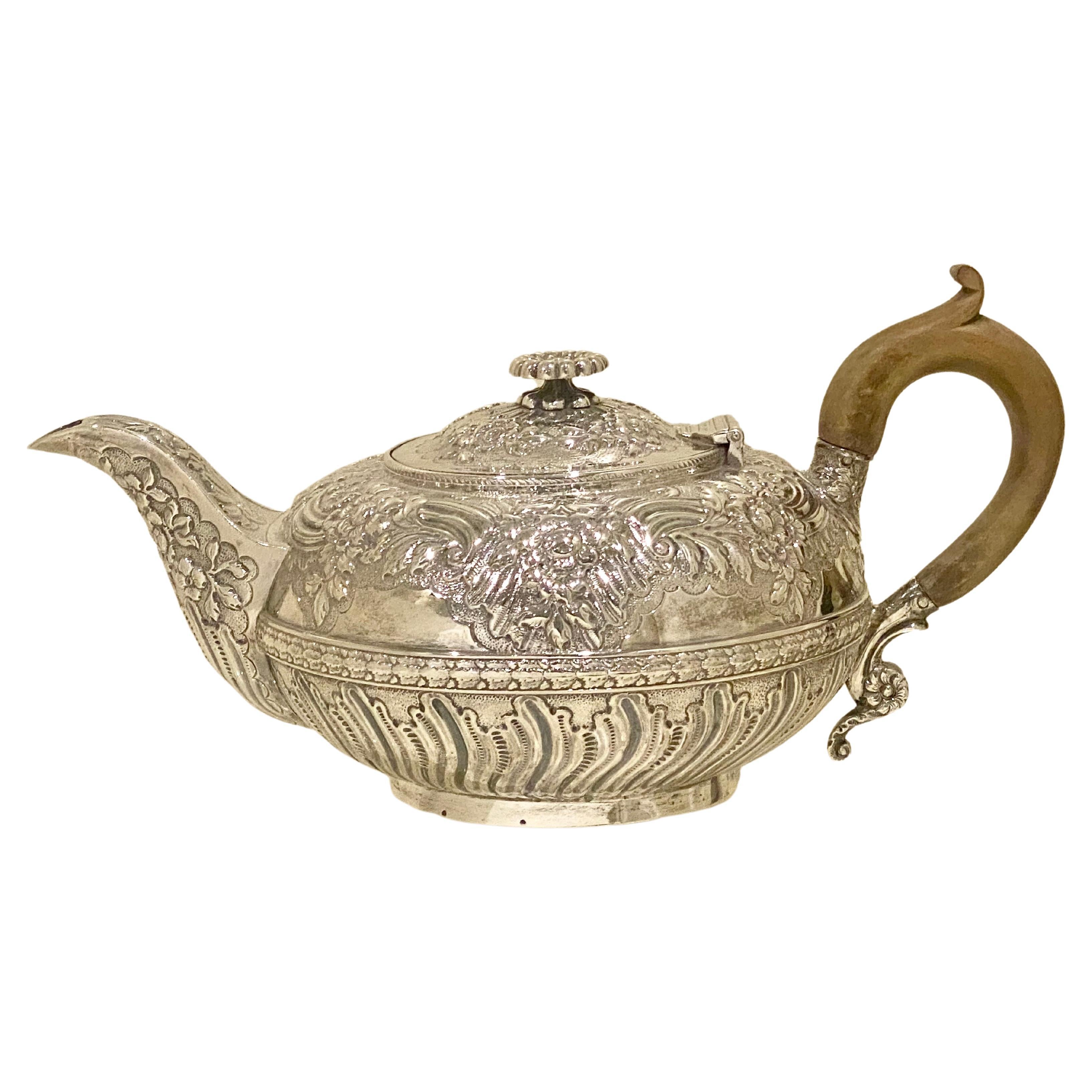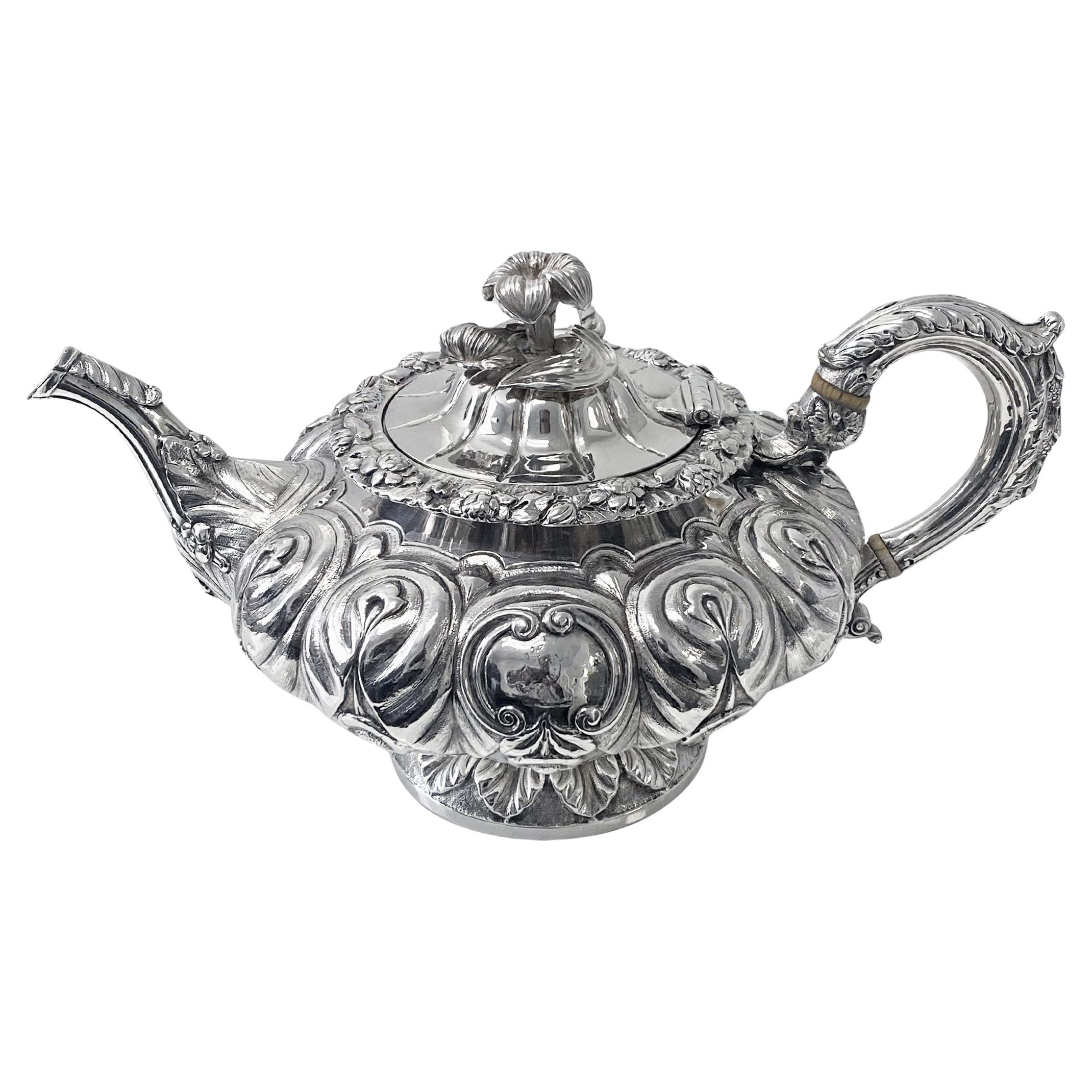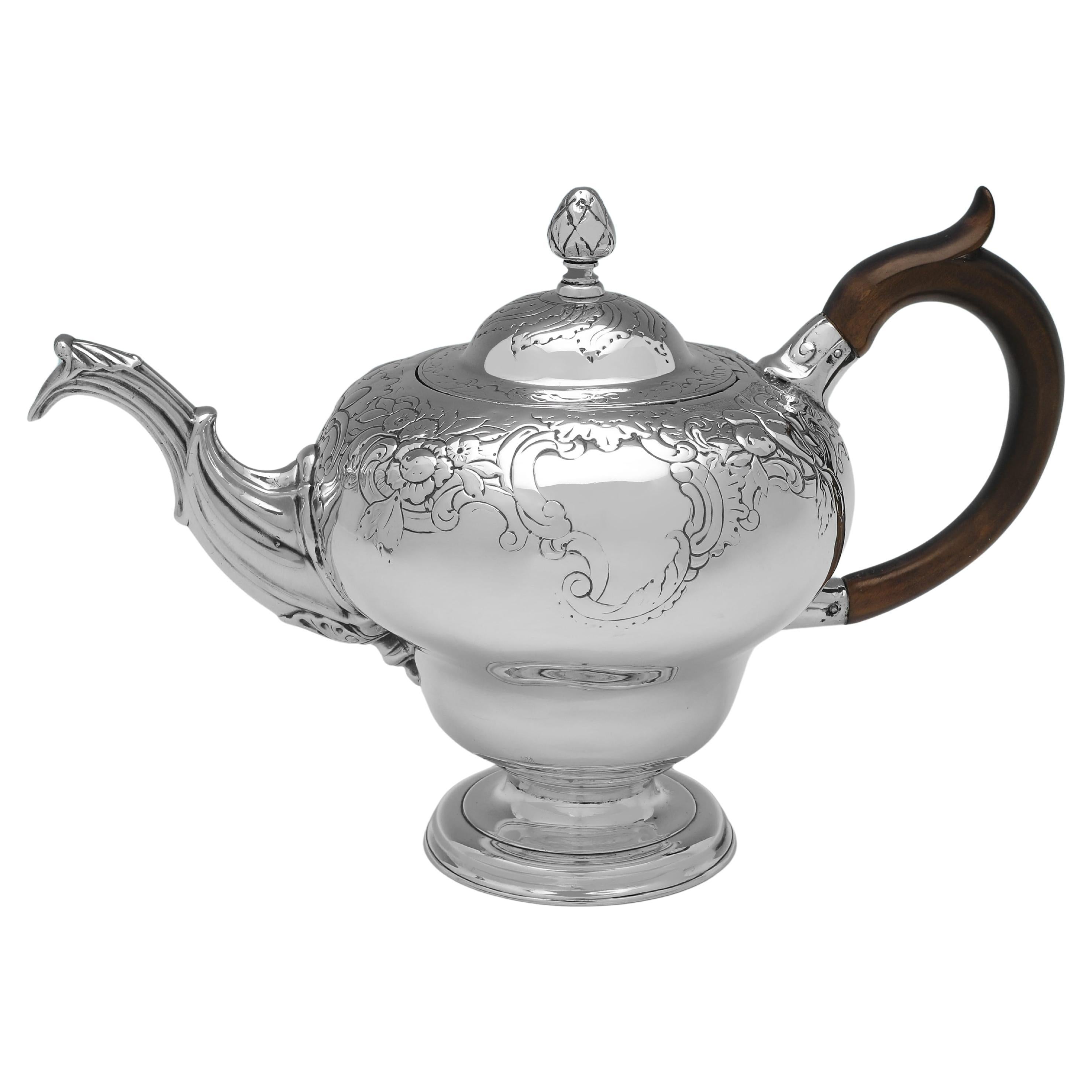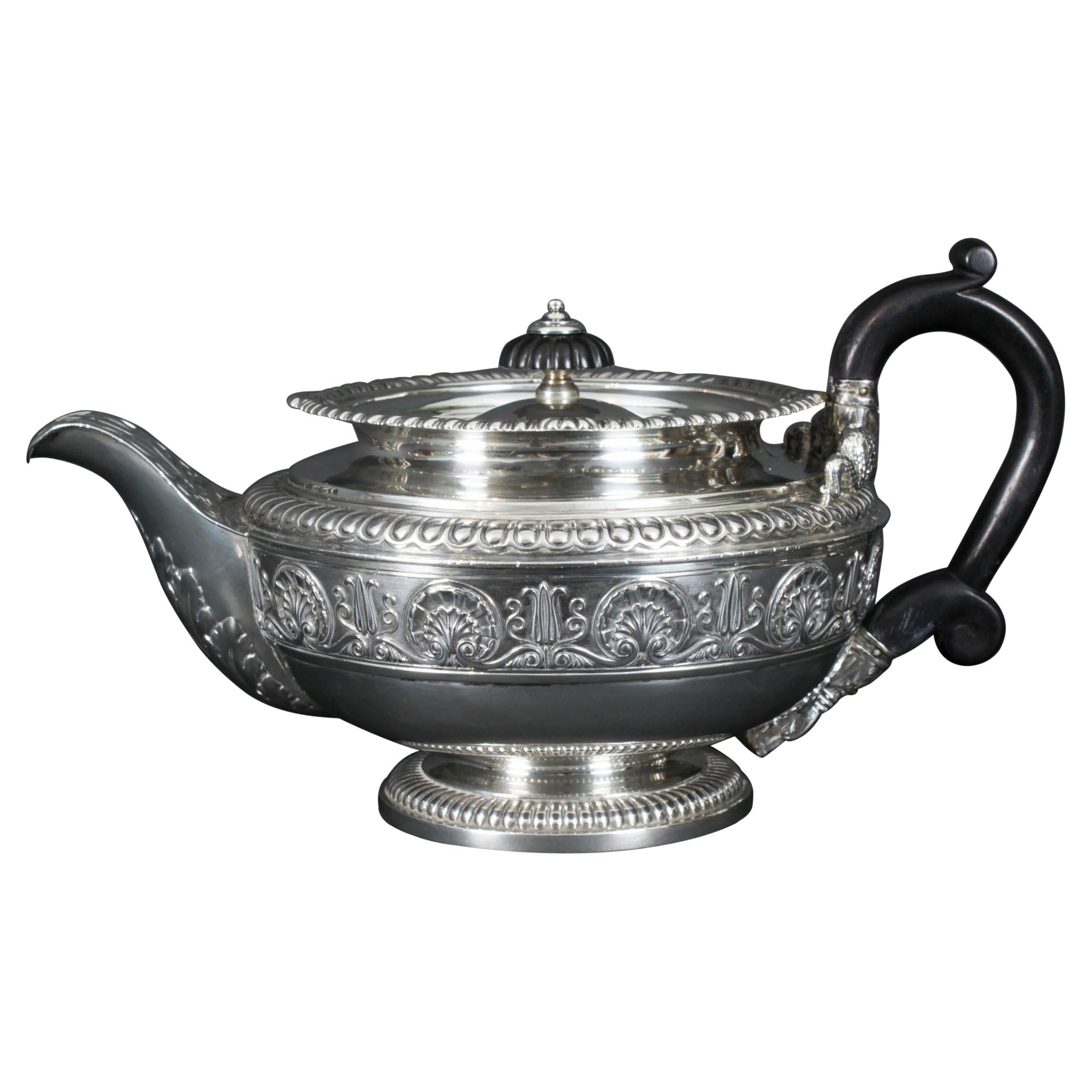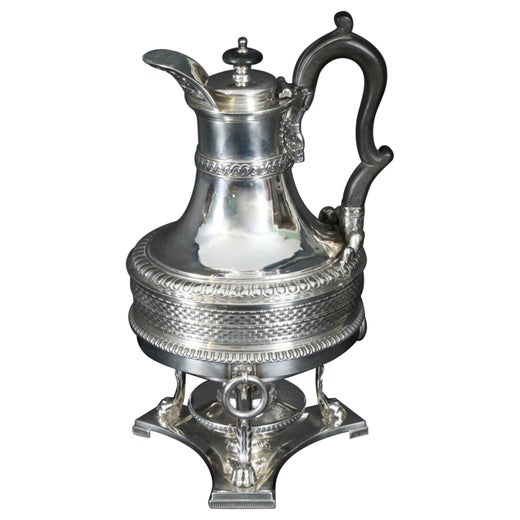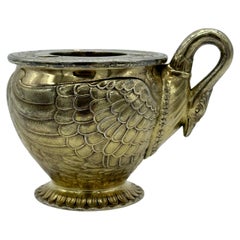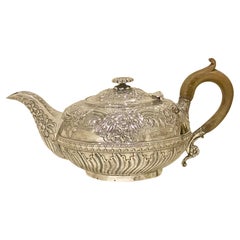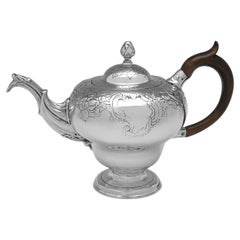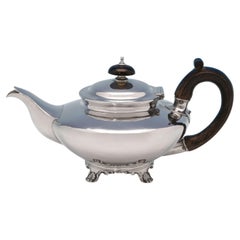Exceptional George III Teapot by Preeminent Silversmith Paul Storr, 1793
About the Item
- Creator:Paul Storr (Artist)
- Dimensions:Height: 7 in (17.78 cm)Width: 6.7 in (17.02 cm)Depth: 11.2 in (28.45 cm)
- Style:Neoclassical (Of the Period)
- Materials and Techniques:
- Place of Origin:
- Period:1790-1799
- Date of Manufacture:1793
- Condition:Wear consistent with age and use. good condition, unrestored in any way, some minor scratched small dings but otherwise perfect for its age.
- Seller Location:Tel Aviv - Jaffa, IL
- Reference Number:1stDibs: LU8130237702992
Paul Storr
Paul Storr was an English goldsmith and silversmith working in the Neoclassical and other styles during the late 18th and early 19th centuries. His works range from simple tableware to magnificent sculptural pieces made for royalty. Storr is credited with perfecting the works, styles and designs of the Regency period. His legacy is a remarkable body of work that spans over several stylistic periods with far-reaching influences. From his Neo-classical masterpieces to his exuberant, ornate vessels, Storr imparted a level of craftsmanship and superior quality that has seldom been seen since.
- ShippingRetrieving quote...Shipping from: Tel Aviv - Jaffa, Israel
- Return Policy
More From This Seller
View AllEarly 20th Century Chinese Chinese Export Metalwork
Silver
Antique 1890s Japanese Metalwork
Silver
Antique 1890s Tea Sets
Gold Plate, Silver, Enamel
Antique 1820s English Sterling Silver
Gold Plate, Silver
Antique 17th Century German Baroque Sterling Silver
Silver
Antique Late 19th Century French Neoclassical Sterling Silver
Gold Plate, Silver
You May Also Like
Antique 1810s British George III Sterling Silver
Sterling Silver
Antique 1830s English William IV Sterling Silver
Sterling Silver
Antique 1750s Scottish George II Tea Sets
Sterling Silver
Antique 1830s English William IV Tea Sets
Sterling Silver
Antique 19th Century English William IV Sterling Silver
Sterling Silver
Antique 1810s English George III Platters and Serveware
Silver
